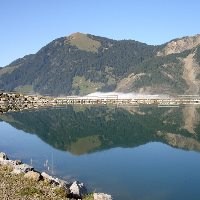(BRUSSELS) – The EU Water Framework Directive is ‘fit for purpose’, the Commission declared Thursday in an evaluation of EU water legislation that shows improved protection for water bodies and flood risk management.
The ‘fitness check’ of the Water Framework Directive, its associated Directives, and the Floods Directive concludes that they are overall fit for purpose, while there is some room for ‘enhanced effectiveness’. Despite improvements in the protection of water bodies and flood risk management, the evaluation points to insufficient level of implementation by Member States and by sectors with a heavy impact on water such as agriculture, energy and transport.
Climate change and environmental degradation are putting pressure on Europe’s water resources. The Commission says the broad objectives of the EU water Directives – tackling water pollution, curtailing freshwater biodiversity loss, and strengthening resilience to climate change impacts – are ‘as relevant as ever’.
“Our water legislation is strong and able to protect both water quality and quantity, also in view of the new challenges from climate change and emerging pollutants, such as microplastics and pharmaceuticals,” said Environment Commissioner Virginijus Sinkevicius. But more than half of all European water bodies are not yet in good status, and the challenges for Member States are more than substantial. We now need to accelerate the implementation of what we have agreed. The momentum of the European Green Deal will allow us to make such a leap forward.”
The results of the evaluation of the Water Framework Directive, complemented by the Environmental Quality Standards Directive and the Groundwater Directive, are mixed. On the one hand, the Water Framework Directive has been successful in setting up a governance framework for integrated water management for the more than 110,000 water bodies in the EU, slowing down the deterioration of water status and reducing chemical pollution. On the other hand, the Directive’s implementation has been significantly delayed. As a result, less than half of the EU’s water bodies are in good status, even though the deadline for achieving this was 2015.
For the Floods Directive, under which the first ever management plans started being implemented in 2016, this fitness check finds that the Directive has improved several aspects of flood risk management, but further efforts are needed to strengthen awareness and secure better and more coordinated flood prevention, in line with climate change projections.
This fitness check also concludes that there is some room for simplification and reduction of the Directives’ administrative burden without jeopardising their objectives. Further streamlining of monitoring and electronic reporting, together with stepped up use of digital and earth observation tools could help alleviate the required administrative effort.
The fact that the WFD’s objectives have not been reached fully yet is largely due to insufficient funding, slow implementation and insufficient integration of environmental objectives in sectoral policies, rather than deficiencies in the legislation. The insufficient level of implementation by Member States and by those sectors of the economy with an impact on water has come to the forefront across the different criteria of evaluation and for all Directives. This is at odds with the widespread support for the water acquis as evidenced by the results of the public consultation.
Assessing whether it is future-proof, this fitness check finds that the Water Framework Directive is sufficiently flexible to accommodate emerging challenges such as climate change, water scarcity and pollutants of emerging concern (e.g. micro-plastics and pharmaceuticals). Chemicals is a key area where there is room to improve and to achieve better results.



